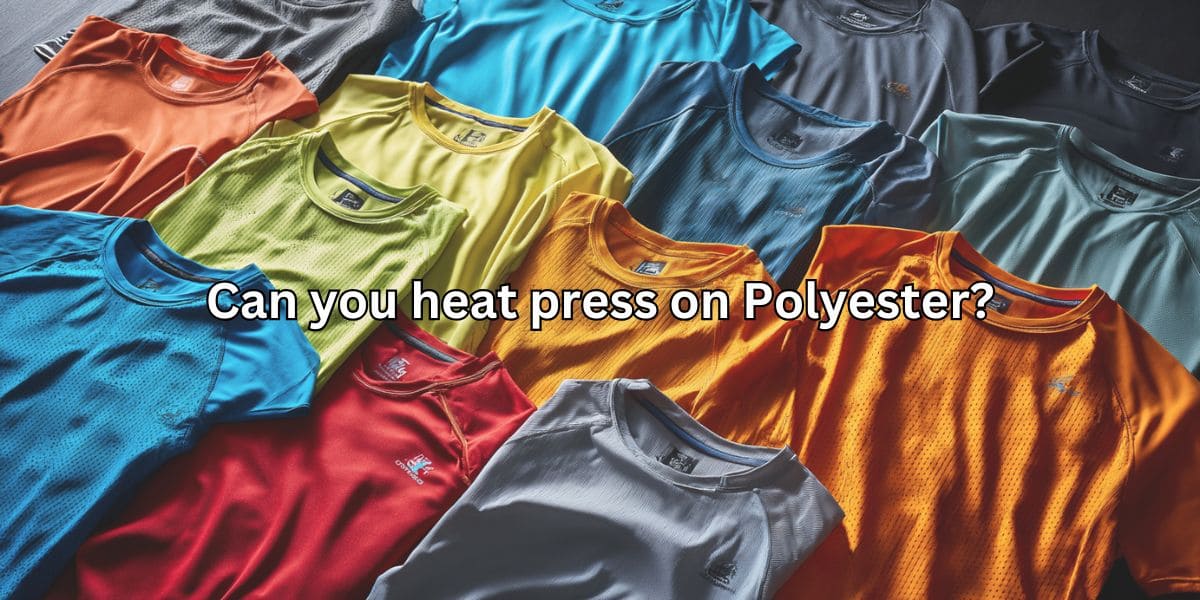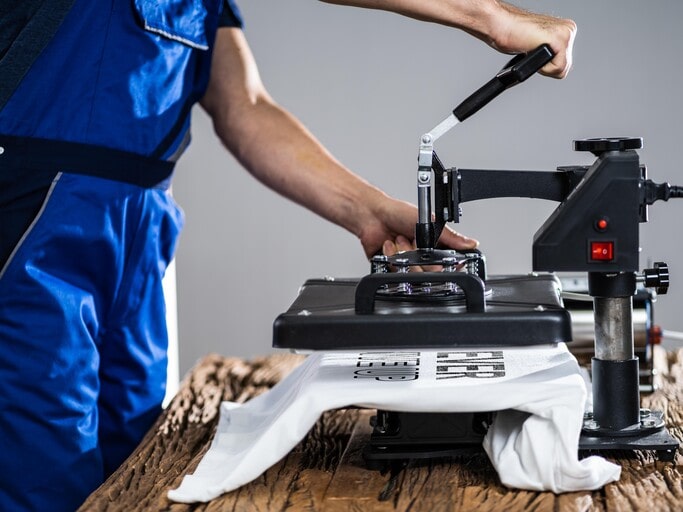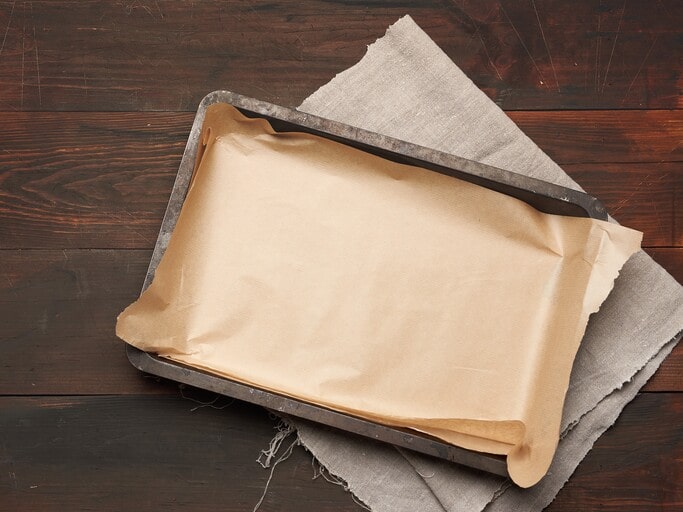
Blog
Can You Heat Press Polyester? The Best Settings for Apply DTF Transfer

Can you heat press on polyester? This is a common question as polyester is one of the most popular garments we use, which makes them a favorite for customization with DTF transfers. But again, can you heat press polyester like cotton? Short answer for you: polyester requires different handling than cotton when heat pressing DTF transfers because it reacts differently to heat.
In this blog, CustomAny will give you the detailed explanation for the question “can you heat press polyester”. We also share the best settings to get clean, lasting prints transferred to your polyester surfaces. So, read on to learn the proper way to heat press polyester.
Can You Heat Press Polyester?
Many people ask, can you heat press polyester without damaging it? The good news is you can, but you need to adjust your technique because polyester behaves differently from cotton.

Why it’s tricky to heat press polyester:
The main reason for the inquiry “can you heat press polyester”, especially when applying heat press DTF transfers is because of polyester’s lower heat tolerance.
When you want to transfer DTF prints onto a fabric-based surface, you need to use high heat. Meanwhile, polyester is a synthetic fabric, which is sensitive to high heat. This creates a few unique challenges, such as:
- Scorch marks: Polyester surface can scorch or even melt if you press it at high temperatures. This leaves behind permanent heat marks you can’t fix.
- Shiny press marks: Without using a cover sheet like Teflon or parchment paper, high heat and pressure can flatten polyester fibers. This leaves shiny, unnatural marks on the fabric’s surface.
- Peeling issues with cold peel transfers: Polyester holds heat longer than cotton. So, if you peel a cold peel DTF transfer too early, it can cause parts of the design to lift, leave incomplete transfers, or create ghosting effects.
Why these risks matter for DTF transfers:
The question of “can you heat press polyester” also includes asking about whether it is possible that you can ruin your DTF transfers. Heat press on polyester is different from doing this on cotton, so it may cause some hardship to setting precise heat and timing, leading to overheating.
When polyester overheats:
- The adhesive can burn.
- The ink can blur or crack.
- The fabric can show visible press marks.
So, “can you heat press polyester” with DTF transfers? – Absolutely. However, you will need proper handling to get it right.
Recommended Heat Press Settings for Polyester
If you’ve been asking, can you heat press polyester without ruining both your garment and your DTF transfer, you will need the right press settings for clean, long-lasting results.
Below are our recommended settings when applying DTF transfers to polyester garments:
1. Temperature
The biggest factor when wondering “can you heat press polyester” safely is managing your temperature. Here’s a simple guide:
- For thin polyester like sportswear, you should set to 270°F
- For thicker polyester fabrics, the recommended temperature is about 300°F
Staying within these ranges helps you reduce the risk of scorching or creating shiny press marks on polyester.

2. Time
When applying DTF transfers onto polyester, the time for pressing each design is about 20 – 30 seconds. If you hold the press for too long, you will overheat it and cause damage.
3. Pressure
When it comes to pressure, we recommend using medium to firm level on most home heat press machines. This ensures good adhesion without flattening the fabric too much.
4. Important Notes:
- Different DTF films can react differently on polyester. If you’re still unsure whether “can you heat press polyester” with your specific film type, you’d better check with your DTF transfer supplier for their exact recommendations.
- Always test on a sample shirt first. Polyester from different brands or in different colors can react differently to heat. Testing will help you catch potential issues before pressing your final garment.
So, the key is following these proper settings. With that in mind, you can rest assured of the question “can you heat press polyester”.
4 DTF Transfer Tips You Shouldn’t Skip
When working with polyester garments, even small mistakes can lead to visible flaws. While the short answer to “can you heat press polyester” is yes, it takes a little extra care to ensure great results.
Here are 4 simple tips you should never skip when using DTF transfers to customize polyester apparel:
1. Pre-Press the Garment
Before applying your DTF transfer, remember to pre-press the garment for 3 to 5 seconds.
This smooths out wrinkles, giving you a flat surface for the transfer to apply on. It also helps you to remove any moisture trapped in the polyester fibers, decreasing the possibility of creating steam and interfering with adhesion during pressing.
2. Use a Heat Press Pillow

Another tip that makes a big difference when heat press polyester is placing a heat press pillow underneath the pressing item. Why?
- This pillow turns the polyester surface into an even one, ready for applying DTF transfers.
- It also helps distribute heat and pressure evenly, reducing the risk of shiny marks or indentations.
3. Use a Teflon or Parchment Sheet
A protective sheet is an important item for pressing DTF transfers onto polyester. This layer prevents direct contact between the heat press and the polyester surface. It will reduce the chance of overheating, so your applying process is less likely to end with scorching, melting, or any shiny press marks left on the garment.
What you need to do is to place a Teflon or parchment sheet to cover your DTF transfer before pressing. It’s a quick, simple way to avoid one of the most common problems people face when they ever wonder “can you heat press polyester” and still get a clean, soft finish.
For anyone still wondering “can you heat press polyester without damage”, this tip is the easiest way not only to protect your polyester but also ensure crisp, even DTF transfer results.

4. Follow Correct Peel Timing
Peel timing is crucial with DTF transfers, especially on polyester, which holds heat longer than cotton.
- For using hot peel DTF transfers on polyester, you can remove the film immediately after pressing while it’s still hot.
- If you are using cold peel DTF transfers, you need to wait until the transfer has cooled completely before peeling to prevent lifting or incomplete transfers.
You may want to read more on our previous blog: “Cold Peel vs Hot Peel for DTF Transfers“. For more details on peeling time, you should check out our helpful guides in “DTF Cold Peel Instructions” blog.
Last words
Polyester may be a little tricky to work with, but as long as you handle it properly, you’ll get clean, long-lasting DTF transfers every time. We hope that now you know the answer to “can you heat press polyester” — and you can do it safely with the right settings and techniques.
If you’re ready to try DTF transfers, don’t forget that we offer custom printing for high-quality cold peel DTF transfers — work well on polyester and other fabrics. So, let us be your companion in personalizing anything you want.












